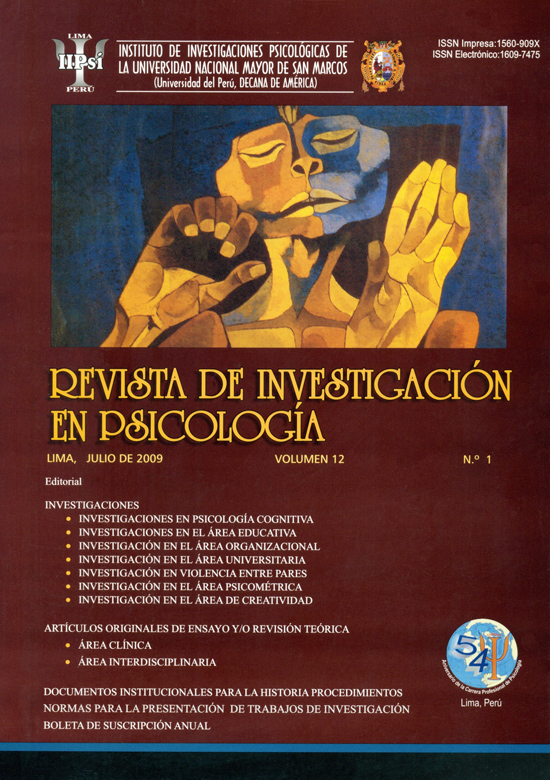Cognitive aptitudes and strategies of sequential memorization of pupils in a private school in Comas
DOI:
https://doi.org/10.15381/rinvp.v12i1.3777Keywords:
sequential memory, cognitive aptitudes, strategies of memorization, system of the personalityAbstract
In the current moment it is insisted on considering to be the importance of the critical period of the development of the child, referring to the whole influence of the social, educational and familiar conditions during the whole process of training, which in turn allow the acquisition and develop so much of cognitive, affective processes, since as conative-motivational and in general lines of your personality as an everything. The studies of the memorization, for treating itself about a cognitive indispensable process in the learning, which allows the storage and update of the information, are and they will be always of great transcendency. Likewise independently of the strategy of memorization that is in use, this one I try help to constructing the cognitive aptitudes in every stage of cognitive development of the child. An opportune evaluation so much of the strategies of memorization, since as of the aptitudes, allows us the later detection of problems of school learning, be these of global or specific nature. Of there that in this study it tries to describe and to explain like are the most frequent strategies of memorization in the children from 6 to 11 years that they contribute favourably or inadequately in the structure of the component intellective, or of the cognitive aptitudes in the childhood.Downloads
Published
Issue
Section
License
Copyright (c) 2009 Pedro García P., Cesar Sarria Joya, Victoria Llaja R., Jorge Soto Mateo, Marina Salazar C., Julio Alvites R.

This work is licensed under a Creative Commons Attribution-NonCommercial-ShareAlike 4.0 International License.
THE AUTHORS RETAIN THEIR RIGHTS:
a. The authors retain their trademark and patent rights, and also on any process or procedure described in the article.
b. The authors retain the right to share, copy, distribute, execute and publicly communicate the article published in the Journal of Research in Psychology (for example, place it in an institutional repository or publish it in a book), with acknowledgment of its initial publication in the Journal of Research in Psychology.
c. Authors retain the right to make a subsequent publication of their work, to use the article or any part of it (for example: a compilation of their work, lecture notes, thesis, or for a book), provided that they indicate the source. of publication (authors of the work, magazine, volume, number and date).






